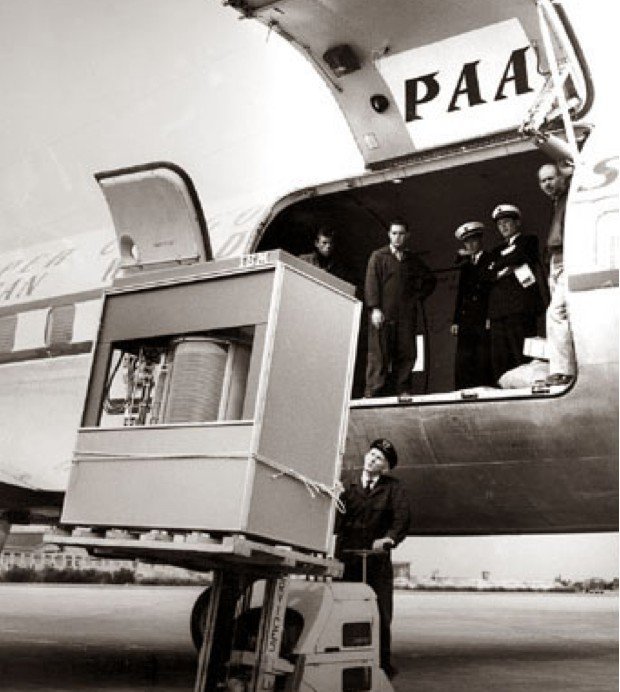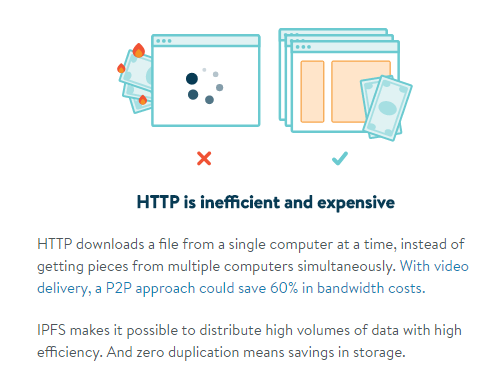Introduction
So you are walking by a resort and a beautiful scenery attracts you. But you are in a hurry, so you quickly bring out your iPhone, snap and walk away with the intention to check it out later.

Behind this simple process is a complex system comprising tons of data computing power hosted by massive data warehouses.
To comprehend how far we've gone, here’s a picture of an IBM hard drive being loaded into an airplane in 1956.

Guess the size of the hard drive? 5 MB! Yeah! Massive 5 MB! Whoops! So huge! :) A 2000 pounds drive containing so little space. 5MB is literally the size of jpeg files these days.
We’ve truly progressed in this aspect. But with the various problems we face in storing and accessing data. Things can get better.
In recent years, scaling Big Data storage has been an obsession of tech companies.
Finding a way to optimally store and access data is a big key to making a lot of life necessities happen. For example, accurately analyzing climate conditions’ data inputs can help warn residents of impending storms and tsunamis. Or finding enough water for the millions of people facing drought in Asia and Africa. So many life-saving use cases.
Where We Currently Are
The Reality of Centralized Web and Data Storage
As much we argue that the web was historically built on the premise of decentralization, the reality is that a number of companies have more-than-normal control over the web.
Now, we are not talking about Google, Amazon, and Facebook. Those obvious too big to fail tech companies. We’re talking about non-obvious ones like the International Telecommunication Union, The Internet Society, the Internet Corporation for Assigned Names and Numbers (ICANN).
Here’s a link to an infographic that beautifully depicts this precarious situation.
A Call For A Distributed Web
A couple of years ago, a number of Internet activists gathered at a conference organized by the popular website, Internet Archive, to talk about the need for a distributed web.
A number of concerns like the Web not being reliable and private were raised. The biggest of them all was the fact that the World Wide Web was very fragile

Due to the scalability issues with HTTP, the average lifespan of a webpage is just 100 days. Precious life moments eroded away!
Is the Internet Down Today?
Last year, a spate of attacks hit the internet so much that a large part of it was down several times over the year.
It was so bad that a website dedicated to tracking internet uptime, Isitdownrightnow.com, was down too. So hilarious!
But should this be allowed to occur? Billions of people rely on the availability of a couple of internet services to earn a living and in some cases, save a life. 2 major events were when Amazon (AWS) servers were down and when DDOS attacks targeted a major DNS host called Dyn.

All this wouldn’t occur if there was a true decentralization of the web!
Move Away Google and Amazon: The New Data Kings Are Here
Decentralized Web + Decentralized Cloud Storage: A Promising Marriage
True Decentralization of The Web:
The IPFS is currently the only tested experiment that has proved that decentralization of the internet was possible. It would be interesting to see what new entrants like brave browser do.

IPFS is a distributed file system that seeks to connect all computing devices with the same system of files.
Here is a succinct explanation of what the service offers. It aims to help mitigate the problems faced by HTTP by decoupling data from their original servers making them permanent. Decentralized distribution after content verification also helps truly secure the Internet’s data.
The first implementation of the IPFS – InterPlanetary File System was Geocities - a now obsolete part of the early internet.
Remember it?
A few days ago, Mozilla partnered with NSF to raise a $2m fund that will encourage solutions championing the decentralization of the Internet and make it accessible for all.
As Blockchain and decentralization reach mainstream, it’s hoped that more solutions will be brought forward to truly decentralize the web.
Blockchain-Based Decentralized Cloud Storage Solutions:
The Cloud Storage Market is a huge one. Projected to reach a worth of $74.94 billion in 2021, leading tech companies like Amazon, Dropbox, Google, Microsoft, IBM amongst others fight tooth and nail to gain a major market share. The billions of dollars spent on scaling doesn’t, however, eliminate the attendant problems that come with centralized systems.
Over the past few months, a number of blockchain based companies have been making attempts to tackle these giants square on. Prominent among them are Sia and Storj.
Both Sia and Storj attempt to leverage the power of the blockchain to store data in a cryptographically-secured and decentralized manner. This helps prevent the frequent downtime faced by conventional cloud storage companies during DDOS attacks. Beyond that, both apps seek to create an open-source platform that will bring internet users (called farmers by Storj) willing to rent unused part of their hard drives and buyers of cloud storage space. This way, the users are always in control.
Storj with its’ blockchain asset(coin) called Storjcoin X (SJCX) initially raised $3million and now has $56million market cap. Sia has gotten a faster traction with a current market cap of $480m.
Other blockchain based solutions like NXT, Factom, PeerNova, Swarm, FIlecoin and Tierion all seek to tackle one or more several issues in the data storage industry.
Conclusion
The world is slowly gaining consciousness that centralization of information helps no one. Every day, efforts are being made to better improve the way we store and access information as humans.
Truth be told, we’ve come a long way and we can only get better. In our struggle towards a more open and decentralized world, one can only hope that blockchain apps truly fulfill their potential.
Over to you
Have you used any of these blockchain-based clouds (data) storage apps and what’s your current pet peeve with the internet?



